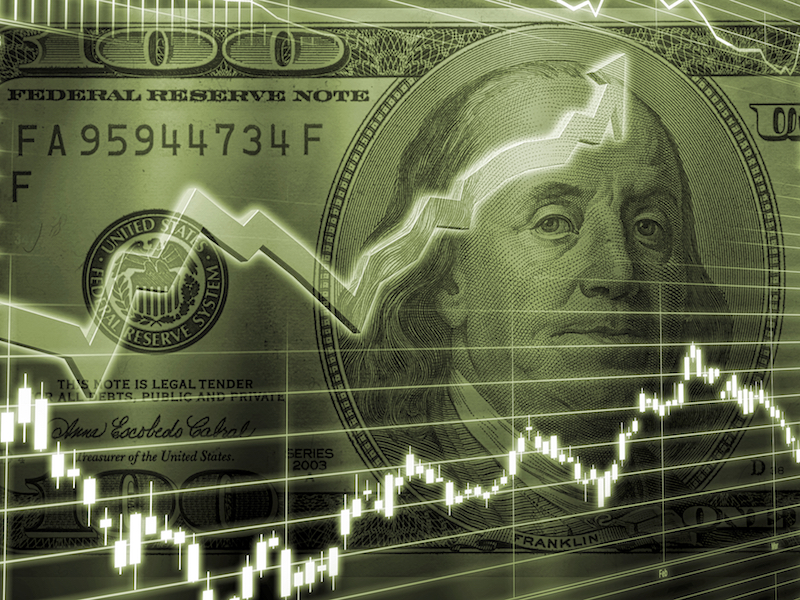Economy
The Dollar Found Not Inversely Proportional to Stock Prices

A popular myth amongst investors right now is that the weaker the U.S. dollar, the stronger the stock market. However, correlation is not causation, and recent evidence does not bear this belief.
The Investors’ Theory Holds That The Federal Reserve Deliberately Kept Interest Rates Low To Boost The Global Market
In March of this year, the Federal Reserve voted not to raise the benchmark interest rate in spite of previous plans to raise it an entire percentage point by the end of the year.
Concerns about the weakness of the global market were cited in the decision.
The stock market, meanwhile, seemed to approve of the news with the S&P 500 stock index ending the day up 0.56 percent.
Even Janet L. Yellen, the chairwoman of the Federal Reserve, states that the stronger the U.S. dollar, the less demand there will be for American goods in the rest of the world.
For About A Month, The Myth Appeared To Be True
During March and the beginning of April, every time the dollar weakened, stocks went up, and whenever the dollar strengthened, stocks went down. The Wall Street Journal states that the dollar losing strength usually meant that the S&P 500 went up by about 5%.
As Quickly As The Correlation Appeared, It Evaporated Entirely
The trend of March and early April wore off as April wore on. The dollar’s strength changed in several peaks and valleys. The S&P 500, however, generally trended up and then had a dip which it mostly recovered from.
If the strength of the dollar is not inversely proportional to the strength of the stock market, what is the connection?
The Wall Street Journal’s James Macintosh has a very different theory about the brief correlation investor’s witnessed.
China, the motivating factor for the increase in the economy
This year, China is spending crazy amounts of money on everything from defense, to foreign companies, to business travel, to internet ads.
Furthermore, they are a world leader in construction. As the producers of the raw materials are an emerging market, they became a safer bet under China’s patronage than the U.S. dollar.
Hence, the drop in dollar is in favor of emerging markets.
So, yes, there was a correlation. However, the causation was a third factor—China’s construction and her huge amounts of spending in general.
China’s Increased Expenditure On Defense
China plans to raise its defense spending by 7% or 8% this year, bringing the total expenditure to around $150 billion dollars in 2016.
China Is Buying More Foreign Companies
In January of 2016, Chinese companies were planning to buy $68 billion dollars of foreign companies. This represented 60% of the money they had spent in the entire previous year.
Some Bids Made On Foreign Companies By Chinese Companies In January:
- Chem China bid $43 billion on Syngenta
- Haier bid $5.4 billion for GE’s appliance unit
- Zoomlion Heavy bid $4.87 billion on Terex Corp
- Dalian Wanda bid $3.5 billion for Legendary Entertainment
China Spends A Great Deal On Business Travel; More Than The U.S.
The Global Business Travel Association states that the U.S. spent $290.2 billion in business travel in 2015.
According to the same source, China spent $291.2 billion in 2015. That’s a difference of $1 billion dollars.
China Is Also Projected To Spend 10.1 Percent More During 2016.
China is projected to spend nearly half of its $85.7 billion ad revenue on internet advertising in 2016.
They are expected to spend more than $40 billion dollars on online ads this year. This is a greater proportion of available funds than most of the rest of the world will spend.
[ms_divider style=”normal” align=”left” width=”100%” margin_top=”30″ margin_bottom=”30″ border_size=”5″ border_color=”#f2f2f2″ icon=”” class=”” id=””][/ms_divider]
[ms_featurebox style=”4″ title_font_size=”18″ title_color=”#2b2b2b” icon_circle=”no” icon_size=”46″ title=”Recommended Link” icon=”” alignment=”left” icon_animation_type=”” icon_color=”” icon_background_color=”” icon_border_color=”” icon_border_width=”0″ flip_icon=”none” spinning_icon=”no” icon_image=”” icon_image_width=”0″ icon_image_height=”” link_url=”https://offers.thecapitalist.com/p/warrenbuffet/index” link_target=”_blank” link_text=”Click Here To Find Out What It Said…” link_color=”#4885bf” content_color=”” content_box_background_color=”” class=”” id=””]Warren Buffett Just Told His Heirs What He Wants them To Do With His Fortune When He Dies. [/ms_featurebox]
[ms_divider style=”normal” align=”left” width=”100%” margin_top=”30″ margin_bottom=”30″ border_size=”5″ border_color=”#f2f2f2″ icon=”” class=”” id=””][/ms_divider]
China’s Imports In Dollars For The First Months Of 2016
- In January of 2016, $114.19 billion in imports
- In February of 2016, $93.55 billion in imports
- In March of 2016, $130.96 billion in imports
- In April of 2016, $127.2 billion in imports
Not Only Is China Spending Like Mad But The Turning Points Of The Dollar’s Strength And The S&P 500 Bear Out Macintosh’s Theory
Late in January, the dollar began to drop.
Meanwhile, mining, energy, and emerging market shares began an amazing turnaround and headed skyward.
The Drop In February Is A Strong Counterexample For The Weak-Dollar/Strong-Market Theory
On February 11th, both the S&P 500 and the dollar dropped significantly, hitting their lowest point of the year.
Were the investors’ theory correct, there would have been a significant raise in one while the other tanked.
The drop was followed by a simultaneous rise in the strength of the dollar and the S&P 500. For a time, the two seemed directly proportional rather than inversely.
The Inverse Proportionality Recently Disappeared Again
The strength of the dollar and the S&P 500 are currently back to moving more or less independently and have been since mid-April.
Sometimes, The Explanation That Feels True Simply Isn’t
Investors all want stocks to follow predictable trends and algorithms—it’s the only way to be sure that your investments pay off.
The temptation to take a temporary correlation and conflate it with causation is very much there.
Believing such myths—however comfortable it may seem at the time—can cost real money. And that is a warning you can take to the bank.



